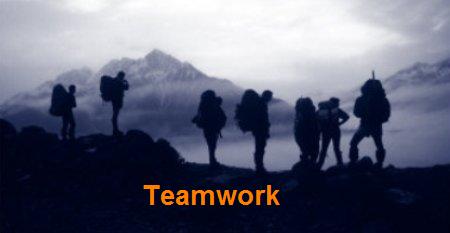In my most recent column on Forbes I briefly discussed the value of white space as it relates to “span of control” but felt the topic deserved a deeper dive. Here’s something you might not want to hear, but you should definitely take to heart – If you’re having difficulty ordering your world, it’s nobody’s fault but yours. I don’t care how busy you are, but I do care about what you accomplish – the former doesn’t always lead to the latter. Busy leaders are a dime a dozen, but highly productive leaders are not so common. One of the easiest things for leaders to do is to bite off more than they can chew.
Fact: bright, talented executives with a bias to action will often take on more than they should. These leaders don’t understand the value of white space. The reality is maximizing results and creating a certainty of execution is all about focus, focus, and more focus. Here’s the thing – it’s difficult to focus in the middle of chaos. One of the hardest things for leaders to do is to learn to create white space. The best leaders are those who understand the most productive things often happen during intentional periods of isolation used for self-reflection, introspection, and the rigor of critical thought.
While the mind of a leader may be most comfortable being oriented toward the future, he/she can only act in the here and now. The knowledge and skills required to master any endeavor only happen when we focus on what we’re currently doing. This is the definition of presence, and it is only when we operate in the present that real creativity, growth, and innovation occur. The problem with being present is many leaders confuse this with having to do everything themselves. Have you ever interacted with someone who deals with silence by jumping in and filling the conversational void? This same thing occurs with executives who attempt to fill every open slot on the calendar with activity – this is a huge mistake.
All good leaders have matured to understand they can be fully engaged and present and yet still be alone. Smart leaders don’t fill their calendars with useless activities, they strategically plan for white space allowing them to focus on highest and best use endeavors.
Leading doesn’t always mean doing. In fact, most often times it means pulling back and creating white space so that others can do. This is true leadership that scales.
Is your rubber-band stretched so tight it’s about to snap? Efficiency and productivity are not found working at or even near capacity. Rather entering the productivity zone is found working at about 60% to 70% of capacity. Operating in excess of that threshold will cause increased stress, lack of attention to detail, and errant decisioning. The old “what if I only had ‘x’ number of hours to work in a week, what would I focus on?” exercise is a good one. In fact, if you’re reading this text, just stop right now and benchmark your activity against your reflective thoughts – Is what you’re doing, in alignment with your true priorities, or have you been sucked down into the weeds?
It is important for executives to learn to apply focused leverage to a limited number of highest and best use activities rather than to continually shift gears between multiple initiatives. Resist the temptation to just advance a broad number of disparate initiatives, and alternatively focus your efforts on the completion of a few high impact objectives. The simple reality is that if you continue to add new responsibilities to an already full plate, all of your obligations will suffer as a result. Face current challenges head-on by keeping your head down and applying focused leverage to the task at hand. Leaders who operate without margins usually hit the wall they are most desperate to avoid.
Have you noticed how some leaders are frenzied, stressed, and always playing from behind, while others are eerily clammed and always appear to be a few steps ahead? It’s been my experience that leaders who fall into the latter category make great use of their thought life, while those in the former category seem to forgo their alone time in lieu of being busy. Savvy leaders crave white space whereas unseasoned leaders feel uncomfortable with open time.
One thing that can be a difficult lesson to learn is that not all engagement is necessary or productive. Leadership and engagement go hand-in-hand, but only when engagement happens by design rather than by default. Don’t get me wrong, good things can happen with spontaneous engagement, but if you’re engaging with others without intent and purpose, it likely serves as a distraction for all parties. Don’t interfere with your team just because you don’t understand how to use your time wisely. If you do, you’ll become an annoyance known for not respecting others – this is not leadership.
I have found the best leaders are harder on themselves than anyone else could ever be. In fact, so much so, that the best leaders constantly self-assess and are relentless in challenging themselves. They relish their solitude because it gives them the ability to be alone with their thoughts, to challenge their logic, to refine their theories, and to test the boundaries of their intellect. It’s during these quiet moments that leaders willing to be honest with themselves will examine their own flaws and frailties. They are forever in search of new ways of dealing with old problems.
Perhaps the most powerful thing about creating white space is that it presents opportunities for others to step in and raise the level of their contributions. When leaders step back and resist the temptation to do everything themselves their organization is strengthened. When leaders become comfortable being without always doing collaboration flourishes and productivity is enhanced. Whether white space makes you more productive on an individual basis, or you leverage the white space create operational depth and scale, you’re better off with white spice than without it.







